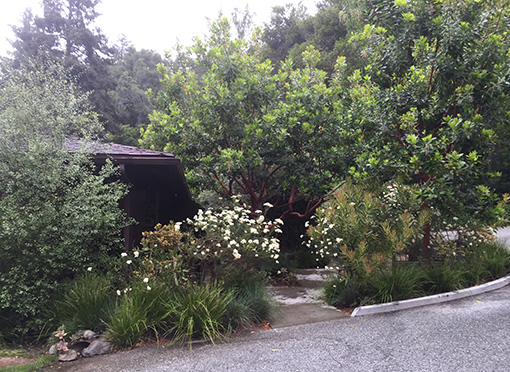A few weekends ago I discovered the beautiful Glen Oaks, a motor lodge in Big Sur. As usual, what drew me in was the landscape design, and specifically the large Arbutus unedo's that could be spotted from the road. We pulled over and I went in for closer inspection. Two (or was it three?) mature and well-pruned Arbutus were clustered in the entry. They were a part of a larger cohesive planting palette, held together by a red-green color scheme. Incidentally, this scheme was also echoed throughout the experience, including signage, architectural materials and interior design. These people weren't messing around.
In addition to the Arbutus unedo, red-green plants included Achillea millefolium (B), Leucodendron 'Safari Sunset' (B), Myrica californica (C), Berberis 'Green Spire' (C) and Euonymus fortunei 'Emerald n Gold' (D). These bold choices were tempered by the soothing neutral effects of Lomandra 'Breeze' (C) and Pittosporum 'Marjorie Channon' (top image, left side).
A planting design like this reminds me to keep the palette clear and focused. The viewer should be able to 'sense' what the theme is, even if they aren't able to articulate it. And, it should be immediate. Clear, uncluttered, and cohesive.
Details:
Botanical Name: Arbutus unedo
Common Name: Dwarf Strawberry Tree
Family: Ericaceae
Exposure: Full Sun
Irrigation: Low Water Needs
Flower Time: Fall to Late Winter
Height: 20-30’
Width: 15-40’
Availability: San Marcos Growers











